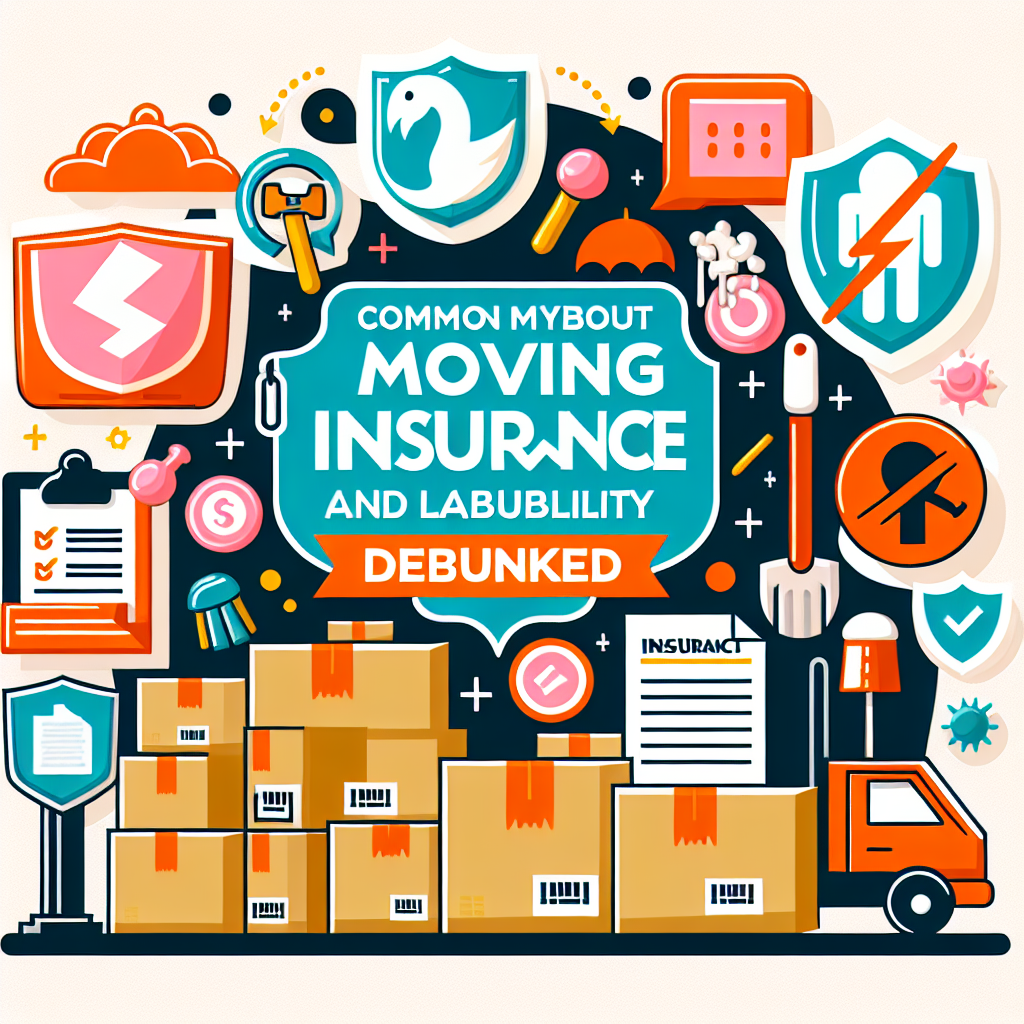Moving to a new home can be an exciting yet stressful experience. One of the most confusing aspects of this process is understanding moving insurance and liability coverage. With so much information — and misinformation — available, it’s easy to fall prey to common myths surrounding these important topics. In this article, we’ll debunk some of those myths and provide you with the facts about moving insurance to help you make informed decisions during your move.
Understanding Moving Insurance: The Basics
Before we dive into the myths, it’s crucial to understand what moving insurance and liability coverage entail. Moving insurance is designed to protect your belongings during the relocation process. It can cover damages or losses that occur while your items are in transit, providing peace of mind to those who are relocating.
The terminology can be confusing, as different types of coverage are available:
-
Released Value Protection: This is a basic level of coverage provided by moving companies, often at no additional cost. However, it only offers minimal protection, typically calculated at a rate of 60 cents per pound.
- Full Value Protection: This more comprehensive option covers the full replacement value of your items. If a piece of furniture is damaged or lost, the moving company is responsible for either repairing it, replacing it, or providing compensation.
Myth #1: Moving Companies Are Always Liable for Damaged Items
Fact: The liability of moving companies varies based on the type of coverage you choose. While movers are generally liable for lost or damaged items, the extent of their liability depends on the type of insurance selected. For instance, under Released Value Protection, the coverage is minimal, while Full Value Protection offers more extensive compensation. Always read the terms and conditions carefully to understand what is covered.
Myth #2: Homeowner’s Insurance Covers Moving Damages
Fact: Many people assume that their homeowner’s insurance will cover damage to their belongings during a move. However, this is not always the case. Some policies may offer limited coverage, while others exclude moving activities entirely. It’s essential to check with your insurance provider to determine your policy’s specifics and consider purchasing additional coverage for your move if needed.
Myth #3: Moving Insurance Is Too Expensive
Fact: The cost of moving insurance can be surprisingly affordable. Many moving companies offer competitive rates for additional coverage, and you might even find that the peace of mind it provides is well worth the expense. Additionally, insurance options are often priced based on the total value of your belongings. Know what you’re protecting to help optimize your insurance costs.
Myth #4: If You Pack Your Own Boxes, You’re Not Covered
Fact: This myth can create a lot of anxiety for DIY movers. While it’s true that some moving companies may limit their liability for damages to self-packed boxes, many also provide coverage regardless of who packed the boxes. However, damages that occur due to improper packing may not be covered. Always clarify your moving company’s policies regarding self-packed items and consider using professional packing services for high-value or fragile belongings.
Myth #5: You Don’t Need Insurance If You’re Moving Local
Fact: Even local moves can involve risks that warrant insurance coverage. Accidents can happen regardless of distance, and local moves can still lead to the loss or damage of valuable items. Protecting your belongings with adequate insurance is a wise decision, no matter how close your new home is.
Expert Tips for Choosing the Right Coverage
When it comes to selecting the right moving insurance, knowledge is power. Here are a few expert tips to help you navigate your options:
-
Assess the Value of Your Belongings: Take inventory of your items and their estimated worth to determine the level of coverage you need.
-
Consult with Your Moving Company: Ask specific questions regarding the types of insurance they offer, so you can make a well-informed decision tailored to your needs.
-
Consider Additional Insurance: If you have high-value items, such as art or electronics, consider purchasing additional insurance specifically for those items.
- Read the Fine Print: Before signing any agreement, ensure you understand the terms and conditions, especially concerning claims and coverage limits.
Conclusion
Moving can be daunting, but understanding moving insurance and liability does not have to be. By debunking these common myths, we hope to empower you with the knowledge needed to make informed choices about your move. Whether you opt for full coverage or take the basic route, ensuring that you have some form of protection is crucial in safeguarding your beloved possessions. Happy moving!


